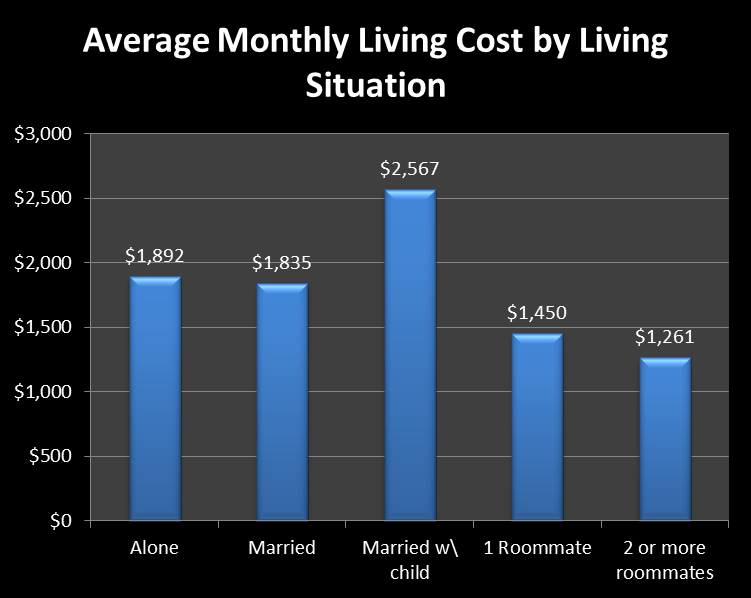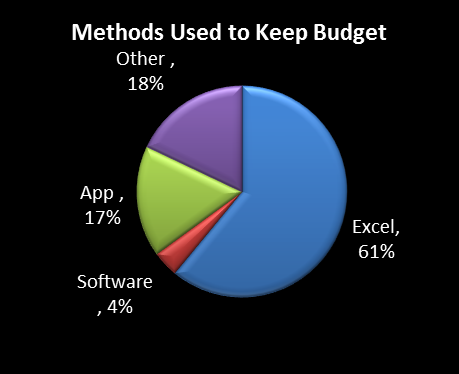Part of my ritual for another school year is a blog entry targeted to our new 1Ls basically focused on “living on the cheap” in New Haven. I could certainly give you my own ideas (like if you shop at IKEA check out their “As Is”… department first where not only can you save money but your furniture will already be put together for you – okay that’s equally a budget tip and equally “I am just lazy” tip). But this year I decided to change it up a little and go to the actual source… real YLS students who have learned (in some cases the hard way) how to save, sacrifice and manage on a student budget. I put out a call in early summer to our rising 2ls and 3Ls asking them to share with our incoming students their money management strategies and was amazed at their resourceful responses:
Most of the students agreed that the most challenging part of the student budget centered on housing/rent, transportation, food and books. That being said here are their creative solutions (with a disclaimer that the Financial Aid Office is not endorsing any strategies or vendors … we are simply stating that this is what students do…):
HOUSING/RENT
“Pay your rent for the entire semester ahead of time so that you don’t have to think about it. It really reduces the stress surrounding finances to have the biggest expense taken care of.”
“The hardest part of budgeting is paying your January rent, since the second semester doesn’t start until after winter break, you don’t get the second round of loans until late January. At the start of the semester, set aside all the cash you’ll need for rent into a savings account (or wherever) and then budget with the rest. A lot of us 1L year didn’t do this and had to scramble in January to make ends meet. “
“If you do not have a roommate, split utilities like internet with neighbors.”
“You can make small adjustments to your food budget, but let’s not ignore the elephant in the room: Don’t live in expensive downtown high-rise apartment buildings just because it’s easy or because everyone else seems to be doing it. You’ll have plenty of time to live in your own private mediocre high-rise apartment once you’re practicing law. Instead, find a room in a cute house in East Rock, Wooster Square, the Mansfield Street area, etc. You’ll save $400-600/month. If you do that, you’ll never have to worry about your food budget. Don’t be afraid to explore New Haven’s “outer” neighborhoods!”
“My advice is simple (for single people): live in East Rock with roommates. Rent is my biggest expense by far – by keeping my rent low, I’ve found living on the budget is really a piece of cake. “
TRANSPORTATION/TRAVEL:
“Get on a bike and go buy groceries. Homemade meals are the golden path to saving a ton of money. It can be hard to get around in New Haven, so a bike can be a great option to get exercise, bask in the sun, and buy the stuff you need. “
“Being in a long-distance relationship can really strain your budget, but planning ahead can help. If your significant other is an Amtrak ride away, buy a Student Advantage card to get discounted train travel. And book those tickets well in advance, even if you aren’t sure that you can actually travel on that day. Fares are much lower two months out and it’s easy to cancel or modify reservations – there’s no fee and you can use the credit towards a later trip.”
“Book your Amtrak or Mega Bus tickets in advance. Prices go way up closer to the date you’re traveling.”
“The key to saving money for me has been signing up for frequent flyer miles and credit cards that give me rewards so I can spend less on transportation to the west coast.”
“Sending my car back home was the best financial decision I could have made. With parking and upkeep expenses I was barely getting by, but without a car I’m able to live within my means. I just get my heavy groceries delivered through Peapod and buy fresh items from the co-op.”
SHOPPING:
“Shop at Savers!!!! Savers has furniture, home supplies & appliances and pretty awesome clothes. There are some real treasures there. “
“Connect with current or, ideally, recently graduated students to see if they can get some furniture. Alternatively, Craigslist is a great resource.”
“Carpool with a few other students every 3-4 weeks to Costco or Trader Joes in Milford and stock up on essentials.”
“If you shop online, use Ebates.com–you get cash back for most major retailers. It adds up!”
FOOD/MEALS
“Make food that freezes well and divide it into individual portions (and freeze it) so that you don’t have to resort to takeout when life gets hectic. “
“It’s surprising how much money you can waste on small expenses like study snacks during the day. To save money, stock your locker with snacks you’ve bought in bulk.”
“Attend events at YLS. Great way to get tasty free food and learn something new.”
“Make your own lunch or buy food from food carts… cook for yourself as much as you can. The dining hall has a microwave, plates, utensils, napkins, basic condiments. There’s even a fridge on the other side of the building. You can really cut costs by bringing your own lunch to school or attending almost-daily free lunch events.”
“I try to pack lunch at least three times a week. And I almost always cook dinner for myself. Buying meals out is one of the most efficient ways to deplete your funds. Plus cooking will impress potential dating partners. “
“I try to buy liquor at the big store next to Trader Joe’s. I get someone with a Costco card to take me shopping there. Don’t eat out! Save it for special occasions. Pack a lunch from home or go to an event with free lunch.”
BOOKS:
“Don’t buy books until you’ve had a couple weeks in your classes. There may be some classes for which it’s more sensible to use the copy the library has on reserve. This is particularly for professors who give a lot of reading outside of the textbook. If students are anything like me and can’t help highlighting, underlining, and taking notes in the text while reading, scanning and printing the pages you need really works. At the most, you’ll spend $60-$70 on printing per class over the entire semester. That probably amounts to a third of what you’d pay for buying the book.”
“If you HAVE to buy the book, make sure to check the Initiative’s book fair at the beginning of the semester, in addition to the ongoing Google doc that YLS students maintain to sell books (2012-13 version available here).”
“You might be tempted to pay more for your books and for shipping so that you can have them for the first day of class. But don’t do it, shop around and find less expensive options. “
“Books are a major expense and there are a lot of other ways to get the readings (friends, copies from the library). My year, someone from our small group got the books from the library and scanned all the readings for the first week and sent them to the group. That way, if the less expensive book didn’t ship for a week or two, we were still all covered.”
“You can also rent books from the book store for a lot less than buying them (though you can’t write/highlight in them). So keep that option in mind.”
BUDGETING IN GENERAL
“Do your best to estimate your utility bills and other bills related to living so that you can get a better idea of how much spending money you’ll have once ALL of your bills are paid for the semester. Divide the excess into weeks –this is the MAX that you can spend each week. Putting the money into a separate account will reduce confusion about how much money is available to go out with friends, shop, etc. “
“I think it’s helpful to make an actual budget in Excel at the beginning of every semester. Then at the end of each semester go back and see how well you stuck to your plan and revise for the next semester as necessary.”
“I set up a monthly budget in August and update it periodically to keep track of my expenses. I usually overestimate (within reason) all budget line items so I have a cushion at the end of the semester.
“I also use mint.com, a budgeting app. It lets you set monthly budgets and makes it super easy to keep track of spending.”
My thanks to all the 2Ls and 3Ls who contributed their suggestions and their first hand experiences living on a “fixed income”. Keep in mind that the Financial Aid Office has budgeting tools available to help you. In addition we will be kicking off our Financial Literacy Lunch Workshop series this year with a workshop on budgeting and credit on September 25 which includes one of those “valuable” free lunch opportunities.





